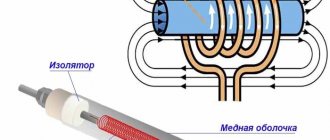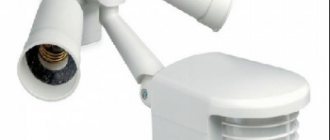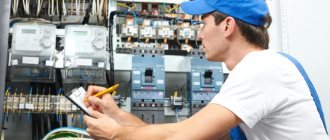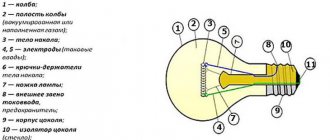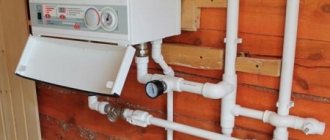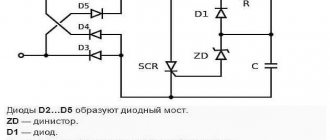An electric convector, like a life preserver, helps cope with low temperatures in our homes during the off-season. The management company has strict regulations for supplying heat to apartment buildings, but the weather has its own, uncoordinated schedule. Solving the problem of discomfort today is not difficult; you just need to go to the nearest store and buy a heater.
Let us make a reservation that the review will not contain an economic comparison of the option of completely replacing the traditional heating system of a house with heating the home using an electric convector. We consider polemics on this issue to be completely inappropriate. Today we are trying to figure out how profitable it is to buy an electric convector, solely in terms of its operation as an additional source of thermal radiation in our apartments.
Design and features of an electric convector
In short, there is a metal body of the device in which the heating element is located. It is often protected with a mesh to prevent burns. Temperature regulation is carried out via a thermostat. In addition, you can change the temperature either manually or programmatically. Modern convectors are equipped with sensors that monitor the temperature and maintain it in a certain range.
The heating element (heating element) consists of a conductor that is sealed in a metal casing. It is shaped like a regular radiator, which significantly increases the heated area. When the heating element is operating, its temperature can reach 100 degrees Celsius. It is noteworthy that the air is not dried out, and oxygen is almost not burned. This is why electric heating convectors are good. The technical characteristics of the unit must be selected based on the area of the room in which it will be installed, but more on that later.
Principle of operation
The operating principle of this heating device is simple. Cold air is heavier than hot air and accumulates at the bottom. Warm air, accordingly, is lighter and tends to rise. The convector has two holes - bottom and top. Cold air enters the lower hole, is heated there with the help of a heating element and, having gained temperature, begins to rise, exiting through the upper slot.
The design of the device is also simple. There is a heating element located inside the housing. The heating temperature is set by a thermostat, the regulator of which is located outside. The equipment works from the network. Convectors are most often made of metal 0.8 mm thick.
Types of convectors
Currently, heaters of this type are divided into groups depending on the possibility of placement:
- Wall-mounted – can be installed in any free space. For example, a convector is hung under a window instead of a radiator. This way, the windows will not sweat, and a thermal curtain is provided.
- Floor convectors do not have a rigid mounting, so they are equipped with wheels. They can move to a place convenient for you, the only limitation is the length of the wire.
- Skirting convectors are mounted against the wall near the baseboard. Best suited for heating display cases or rooms with large windows.
- Universal - they can be attached to the wall using brackets or placed on the floor, as they have legs. One of the best options, as it provides several placement methods.
- Built-in electric heating convectors. Technical characteristics, in particular power, are limited by the size of the niche in the wall or floors. The installation of such heaters is planned during renovation of the premises.
Review of popular brands
Models of electric convectors are produced by manufacturers in different countries of Europe, Asia, and America.
Let's name just a few of them:
- Arbonia . A Swiss-German company producing steel pipes, heating radiators, heated towel rails and convectors. The company's product range is extremely extensive, and almost all products can be purchased in Russia. The offered models of convectors are very diverse: they have different shapes, colors and sizes. The company also accepts orders for non-standard products, such as corner units.
- Buderus . The German brand, now part of the Robert Bosch GmbH concern, originated in the first half of the 18th century. Initially, the company produced cast iron elements for making hearths, and from the beginning of the 20th century it began producing heating devices, including those powered by electric current. The company produces highly efficient, high-quality convectors that combine high technical characteristics and attractive appearance. In 2012, the company was awarded the Red Dot Award, awarded for achievements in the field of design.
- Kermi . The start of production of this German company dates back to 1960. The company produces various types of products, including shower cabins and heating equipment, but it is convectors, widely represented in Russian stores, that are the hallmark of the company.
- Purmo . The company, founded in the Finnish town of the same name, has been producing heating devices that can withstand the cold climate of the northern country since the late 1950s. In the early 1970s, after the company became part of the Rettig concern, production was significantly modernized and automated. Now the company's products are known all over the world: they are exported not only to European countries, but also to other continents.
- Zehnder . The Swiss company, created at the end of the 19th century, specializes in the production of luxury products. Its range includes heated towel rails, radiators and convectors of various types (ceiling, floor, wall), having a truly “cosmic” design. In addition to serial products, the company produces custom models, taking into account the individual requirements of clients.
In addition to the above companies, convectors from the French company Noirot, Norwegian Nobo, German Stiebel Eltron, Roda and other companies are popular.
Still can't decide on the choice of convector for your home? We recommend that you read the tips on choosing heating devices, which are given in our other article.
Electric convector: how to choose
First of all, it is recommended to pay attention to the type of heating element. This can be a regular spiral, which is protected from contact with air and interacts only with the radiator. The latter prevents air from burning out and drying out.
A ceramic heating element is also installed. It has several significant advantages over the spiral. Firstly, a long service life, and secondly, a more aesthetic appearance even without installing a protective grille.
We have already figured out a little about what an electric convector is. How to choose such a device? Pay attention to what type of heat radiation the heater provides. In most cases, this is convection, which is aimed at heating not an object, but air. This type of device is the most popular today.
There are convection-infrared devices. In addition to the air, they also heat surrounding objects. This is where their energy efficiency lies.
What kind of device is this?
An electric convector is a room heating device that is carried out by heating the air passing through it. In this case, no fans are involved: cold air enters the device through holes at the bottom of the case, and when heated, it rises, giving way to what has not yet been heated.
Air masses continuously circulate
Please note: physical laws apply when the convector operates.
Many people fear that an electronic device will consume too much energy, but this is more typical for older models that do not have heating control. With modern devices such problems do not arise; on the contrary, they save energy as much as possible. The clearest example of such devices is a wall-mounted convector.
Operating principle of an electric convector
Control type
Currently there are mechanical and electronic controls. The first, produced using a conventional regulator, is more familiar to us. It's quite convenient and reliable. However, there is no way to program the operation of the device, and it is very difficult to set the temperature with sufficient accuracy. This is due to the fact that the scale often comes with an interval of 10 degrees, so the temperature cannot be set to 35 or 55 degrees.
As noted above, there are also electronic heating convectors. The technical characteristics of these devices in terms of power are exactly the same, however, it is possible to set the temperature with an accuracy of one degree, as well as program the heater for a specific operating mode. The disadvantage of this solution is that the electronics are sensitive to moisture, so the room must be dry. You can't put such a device in the bathroom.
Equipment power
When choosing a heater, let's not forget about its power. Of course, extra power never hurts. On the other hand, if the convector is planned to be used in addition to existing heating systems, why overpay for the excess power reserve.
| Convector power, W | Room area, m² |
| 1000 | 10 |
| 1200 | 12 |
| 1500 | 15 |
| 2000 | 20 |
| 2500 | 25 |
If you need to add heat to an apartment with an existing water or steam heating system, then it is wiser to use a heater of reduced power. It is recommended to use the following formula: per 10 m² of room area, 0.5 kW of thermal energy is required. Then both the heater and the room batteries will work as if in pairs, complementing each other. On sale, the power of convectors starts from 750 W.
What if there is no central heating?
Let's also look at the formula. Only now 10 m² requires 1 kW of thermal energy. But it is also necessary to provide for possible heat loss from window and door openings. That is, you need a power reserve of 10–20%.
It will not hurt if you take into account factors such as:
- Number of windows in the house. It's easier here. One heater is required per window.
- What type of room - corner or adjacent?
- Whether or not there are basements below.
- Are the external walls insulated or not?
If you have to choose a heater for your dacha, you need to know exactly which model of such convectors will heat the air space in the room faster and better.
And another important point. It would be a good idea to remind you about safety precautions. It is necessary to take into account the degree of wear and tear of the electrical wiring in the house. Convectors that are too powerful can cause overheating of the wires. And this will lead to either a short circuit or a fire!
If you are not sure of your calculations, it is better to seek help from specialists.
Technical characteristics of convectors
Today, manufacturers offer a wide range of heaters. The differences between them are in design, size, and, most importantly, power and functionality. Agree, it is very important to buy a convector whose power will be optimally selected.
Super-productive models will not be used 100%, therefore, there is no point in overpaying for them. If the power is insufficient, such a convector will not heat the room, which is also not good. There is a certain standard according to which you can select a device of suitable power.
With a ceiling height of 2.5-3.2 meters, the convector is selected as follows: 100 watts are required for each square meter of the room. So, for a room of 10 square meters you need a 1 kW convector, for a room of 20 square meters - 2 kW, and so on.
We have already looked at electric heating convectors, what they are and how to choose a device of suitable power. Now let's look at the functionality.
Advantages
The positive characteristics of electric convectors are:
- Easy to install and operate
. In order for the heater to produce heat, it is placed on support legs (fixed to the wall) and connected to an outlet; - Maintenance during the operational life consists of periodic cleaning of dust;
- Low cost
compared to other devices; - Maintaining
the required temperature in the room without constant human control; - No noise
(no moving parts). Only appliances equipped with a mechanical thermostat will make a small clicking sound when the appliance is turned on and off when the room temperature has been reached; - Efficiency reaches 95%;
- Heating of the room begins immediately after switching on
, and the heating element heats up in half a minute on average.
Additional features
In most cases, conventional heating is not enough. For this simple reason, there are additional functions that some electric heating convectors have. Their operating principle is different. For example, ionization is needed to saturate the air with ions, as well as to trap dust. It has been noticed that thanks to the functioning of such devices, the general condition of a person improves and fatigue decreases.
It’s good if there is such an additional function as a thermostat. It is needed to save energy. For example, the device heated the room to 23 degrees. After this, the convector will go into saving mode, essentially turning off. When the air temperature drops, the thermostat will work and the device will start working again.
The timer is another useful feature that will help you set the desired time for heating the room. For example, the convector will work until 12 at night, and then turn off until the morning.
Choosing an installation location
Or rather, the question is not this: which convector is suitable for fulfilling your wishes. If you want to bring the appearance of the room closer to the standard one, you can hang rectangular wall convectors under the windows. Models that can be installed under the ceiling attract a little more attention, but they are inaccessible to children and pets - they will not be able to get burned or “adjust” in their own way. The installation method is the same here - on brackets fixed to the wall. Only the shape of the brackets differs.
You can choose any location for installing the electric convector. It is only advisable that it is not covered by furniture
If you want your heating appliances not to be visible, you will have to choose between baseboard and in-floor models. There is a big difference in installation: skirting boards are simply installed and connected to the network, but for in-floor ones you will have to make special recesses in the floor - their top panel should be on the same level as the finished floor. In general, you cannot install them without major repairs.
These are floor-mounted convectors. They are also electric
Electric heating convectors: their capabilities and features
Today, the newest models can be considered truly unique. This is due to their wide functionality and reliability. Among the features is that the body of most products is made of a special alloy that does not heat above 60 degrees. Consequently, ignition of objects around is excluded in the same way as a burn due to accidental touch. Another interesting thing is that you can program convectors. True, not all models have this function; it is inherent in units in the high price range.
Installation method
Electric convectors are wall-mounted and floor-mounted. Special fasteners are often supplied with wall modifications, but sometimes they need to be purchased separately - they are sold in specialized stores. Due to the low weight of most heaters, there is no need to buy overly powerful fasteners.
Choose models with removable legs and the ability to mount them on the wall.
As for floor-standing models, they are equipped with legs/wheels for placement on the floor. Convective heaters can operate as permanent equipment or as auxiliary equipment. By placing it at one point or another in the room, you will be able to quickly adjust the heating zone. For example, if the room goes deep into the building, you can place the convector at a remote point for the most uniform heating of the air.
In most cases, electric convectors are universal - it is best to choose wall-mounted models with complete legs for floor mounting . This scheme will allow you to quickly remove the heating device from the wall and install it at the desired point in the room. In addition, almost all floor-standing devices have removable legs - thanks to this, they instantly turn into wall-mounted models.
In some modifications, positioned as universal, there are no complete legs - they must be purchased separately. It’s best to clarify this point before purchasing rather than swear about your legs later.
User reviews
What do ordinary people write about convectors? There are different opinions. It is safe to say that a lot depends on the manufacturer. Some users write about how convenient built-in heating convectors are. The technical characteristics of these heaters are such that in the event of an emergency (gas outage), they can play the role of an emergency source of heating in the room. This is very convenient, since such convectors do not take up space, because they are placed in a niche. It should be noted that there are generally good reviews about infrared convectors. Users say that they perfectly warm the floor, furniture and other interior items.
Universal formula
Based on the given indicators, it is clearly visible that the average level of thermal power is found using the simple formula “100 W = 1 m2 of heated area.” These indicators are correct when calculating power for rooms with a standard ceiling height - from 2.5 to 3 m. If you plan to install a convector in a room with a ceiling height of more than 3 m, you must apply a correction factor, increasing the required heating power device by 25-30%
It is worth immediately emphasizing that this is an average indicator. If the room is cold, has many windows or a complex shape, then the formula may not work
In this case, our specialists will help you make your choice.
Briefly about the manufacturers
The best convectors in terms of reliability and quality are produced in France. Products from Noirot and Applimo are especially popular. Despite the high cost of the units, they practically do not break down and are considered the most reliable in the whole world. Another company worthy of attention is RODA from Germany. The products are famous for their optimal price-quality ratio.
UFO also receives good reviews among consumers. The products of these brands are actively purchased in the Russian Federation. If you purchase products from any of the companies described above, you will be satisfied with how the electric heating convector will work. Installation and types of installation may vary depending on the model and its dimensions. In some cases these are anchors, in others - self-tapping screws, etc.
Safety rules when using EC
Any type of electrical appliance requires compliance with certain safety rules. There are some restrictions for the use of convectors.
If the electrical wiring is in good condition, heating convectors can be left unattended for some time, especially if the models are equipped with overheating sensors
Safety regulations:
- Under no circumstances should the appliance be covered or used as a clothes dryer.
- It is not recommended to place the convector near an electrical outlet: the minimum distance at which the device should be located is 0.8 m.
- For rooms with a high content of water vapor, device models marked IP 24, indicating a high degree of moisture protection, are suitable.
In general, modern devices have a high level of reliability and fire safety.
Convector heater design
The electric convector is externally made in the form of a rectangular structure of small thickness, with a horizontally oriented grille on top of the front side, and another similar grille, but at the bottom of the back side.
The heater control unit is located at the end of the top or side part.
Inside the convector body there is a heating element with a diffuser, a control board and a temperature sensor.
Moreover, the heating element and diffuser are located in the lower part, and the board is located at the top. This is the whole filling of such a heater.
The control board additionally includes a thermostat that allows you to maintain the temperature in the room, as well as a fuse that controls the operating temperature of the device and provides emergency shutdown in case of overheating.
Designs of convector heaters.
Convectors use several heaters of different designs.
The simplest are needle-type heating elements. They have a plate on which a nickel thread is attached in the form of loops.
There are also tubular heating elements in which the heating element is located inside the tube.
The best are monolithic heaters that use a sealed tube filled with magnesite.
The diffuser consists of aluminum plates installed along the entire length of the heating element tube. Its task is to ensure better heat transfer by increasing the area of the heating element.
The temperature sensor is located near the bottom grill. The sensor itself is very sensitive and is capable of detecting a temperature change of even 0.1 degrees. WITH.
